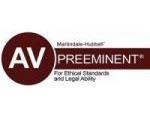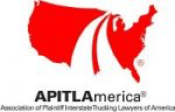The arrival of a new baby brings so much joy, and the necessity for buying so many baby-related products. New parents naturally only want what is the best for baby, so choosing the safest products is a top concern. Strollers and carriages top the list of essential baby items that must be safe to ensure baby’s well-being.
The U.S. Consumer Product Safety Commission (CPSC) defines “stroller” as a wheeled vehicle used to transport children, usually from infancy to 36 months old. “Children are transported generally sitting up or in a semi-reclined position by a person pushing on a handle attached to the stroller.” Carriages differ in that they usually transport the infant in a lying-down position.
Currently, the potential threat of injury from these products—if they are defective—is real. From January 2008-June 2013, the U.S. Consumer Product Safety Commission (CPSC) reported four deaths, 14 hospitalizations, and almost 391 injuries for children 4 years and younger involving strollers.
To nip those scary statistics in the bud, the U.S. Consumer Product Safety Commission (CPSC) has issued new federal requirements to ensure all strollers and carriages are made, tested, and labeled to maximize safety and minimize accidents and hazards for both parent and baby. However, these standards only affect strollers and carriages sold after September 10, 2015. Strollers and carriages currently in stores are not affected by the new standards. The types of carriages and strollers within the scope of the standard are comprehensive: full-size 2D strollers that fold in front-to-back (or back-to-front) and 3D strollers that fold in front-to-back (or back-to-front), as well as side-to-side directions, travel systems (which include car seats), tandem, side-by-side, multi-occupant and jogging strollers.
The injuries the standards aim to avoid are numerous, but pinched, cut, or amputated arms and fingers as a result of hinge mechanism issues top the list. (The hinge is the lock on the folding mechanism that can cause the stroller to collapse when it fails.) The threat for this type of injury is so common that, in November 2014, Graco, a large children’s product retailer, issued a nationwide recall for many of their strollers. The Aspen, Breeze, Capri, Cirrus, Glider, Kite, LiteRider, Sierra, Solara, Sterling and TravelMate Model Strollers and Travel Systems were all recalled for that very reason: the folding hinges malfunctioned, and pinched children’s fingers, posing a laceration or amputation hazard.
The new CPSC standards also address head entrapment hazards associated with multi-positional/adjustable grab bars, as well as: broken and detached wheels, parking brake failures, restraint issues (which can result in children being able to unbuckle themselves), broken and loose safety belts, structural integrity, and stability. Another common cause of injury is when babies aren’t secured well enough and slip through a leg opening in the stroller.
To stay abreast of any recalls on products for children and babies, visit: http://www.safekids.org/product-recalls.
These new standards for strollers and carriages are good news. If the standards are too little, too late for you, however, and your child has been unfortunately injured as a result of any defective child product, call the skilled attorneys at Brooks Law Group. We can help determine whether you are entitled to any compensation from the defective product which resulted in your child’s injury.













